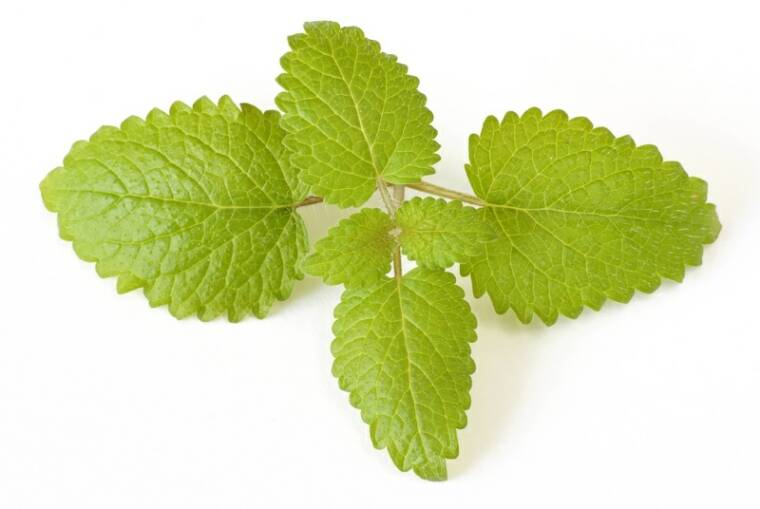Lemon Balm is a hardy perennial that makes a bush mound if pruned repeatedly or a sprawling patch if left alone. Upright stems 2 feet tall have opposite heart-shaped leaves with a crisp texture, distinct veins and toothed edges. Ordinary plants are bright green; there’s also a yellow variegated form. The different varieties are: M. officinalis ‘Aurea’ which is somewhat shorter than the straight species, at 12 to 15 inches. It has golden leaves but a similar taste and aroma. M. officinalis ‘Variegate’ has green leaves variegated with gold. It shows off its variegated color scheme best in moist semi-shade locations. M.officinalis ‘All Gold’ has leaves that are a bright chartreuse. [hardy to] Zone 5.
Culture
Plant in full or part sun. Ordinary soil and watering. Propagate by dividing clumps in spring. Looks best if you shear it 2-3 times during the season to renew the foliage and to prevent flowering.
Nomenclature
The botanical name Melissa comes from the Greek word for bee. Lemon balm both attracts bees and calms them, and some beekeepers rub the hives and their hands with lemon balm when working with the bees. Sixteenth-century gardeners were also known to rub the leaves onto beehives to promote the production of honey from within.
History & Lore
The 17th century Carmelite nuns produced their famous Carmelite Water by combining lemon balm with lemon zest, angelica root, nutmeg and coriander. This formula was sold for hundreds of years under the name Eau de Mélisse de Carmes and was used to treat various nervous disorders.
In lore and legend, Lemon Balm has been associated with strengthening the mind, calming nerves, promoting longevity and healing wounds.
Those keeping bees may find that Lemon Balm attracts new bees and can calm restive ones if the hive is rubbed with the herb or grows nearby. In fact, for its first thousand years in cultivation, this was its primary purpose!
Lemon Balm is classified in the mint family.
Lamiaceae (formerly known as Labiatae) - Mint family
Description: Perennials with square stems, opposite leaves and
small flowers borne in whorls.
